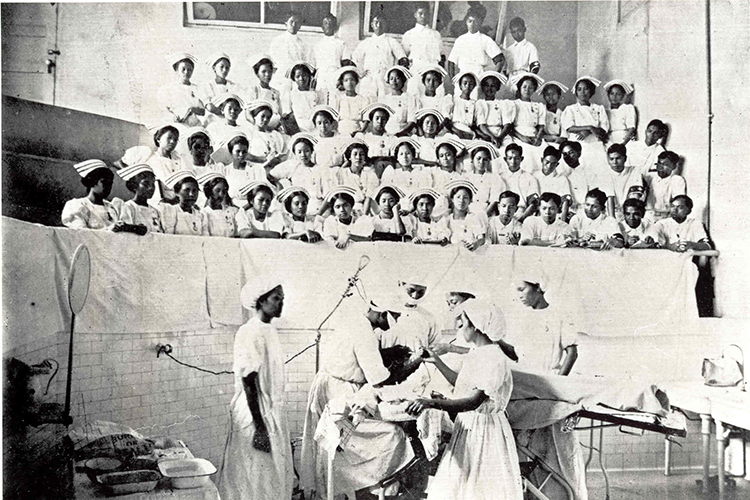Can Photographs Change the World?
Every time I go to an inpatient or outpatient clinic there is always one or more Filipino nurses working. So, I always ask myself, “Why are there many Filipino nurses working in the United States?” As a student nursing, I'm always pondering this phenomenon in my head that led me to do the research. From the study conducted by Choy, she emphasized that soon after the Philippines became a U.S. colony in 1898, the U.S. government implemented American nursing programs in the Philippines in an effort to civilize the Philippines. This Americanized nursing curriculum inadvertently prepared them to work in the United States. The Philippines continues to be the top exporter of professional nurses to the US. From this photograph alone, it subconsciously implied one of the reasons I chose the nursing career. I love this image because it shows the extreme passion of this recruit to the field. Without even recognizing the developing history, growing up as a child, I always wanted to work in the healthcare field. This fact might be hard to believe but this career has embedded greatly in the lives of Filipinos. Not only that they've contributed saving lives since after World War II, but up to this day, these overseas workers have the greatest distribution to the Philippine economy.
 | ||||||||||||||||||||||
| Photo by: UC-Berkeley News, University of California, Berkeley |
I do not believe that photograph alone can change the world but I believe it can be change by bringing awareness to the viewers about the issues happening in the world. It is truly the people who controls the evolution of the world through their eagerness to take initiative contributing to the issues. Jonathan Klein of Getty Images highlight during the TED talk that images have provoked reactions in people and those reaction have caused change to happen. Firmly, if we try to bring this statement into perspective, it is always going to remind us that the viewers are the hope for the change not the image alone. Imagine a person solely collecting photographs of kids starving in the third world country but without doing productive to solve the problem. This correlates to the article titled The Premise Behind These Pictures, I have flick through which underlining the point that photograph has the ability to arouse our reaction but the written words are said to be more important. Whether the image's background is plain or pleasing, the action towards the issue is what matters.
Furthermore, we can also solve disparities through the power of the digital tools one of which is photography. Inequality has become the hot issue here in the United States since then. Of course we might not witness it around us but it is happening through the other parts of the country. Now in social media, there are many unpublished journalists or colloquially know as netizens that upload pictures and video that they witness and put some descriptions of what they felt regarding to that matter. Example of this is a citizen journalist from Ferguson Missouri who uploaded series of pictures and videos in Twitter about police brutality. These people might not be a credible sources but what they see might be true. With that being said problem doesn't end here, there is also the conglomeration of the media in the country. That could possibly constrict the power of delivering different issues to the public. Media Consolidation article, stressed that this might be a racial justice problem because of the likelihood of people of color being ignored in the news coverage. Therefore, photographs and videos can promptly change the world if it is utilized as a tool of showing humanity and that it unite the people despite of the differences.
 | |||
| Photo by: The National Interest |

Comments
Post a Comment